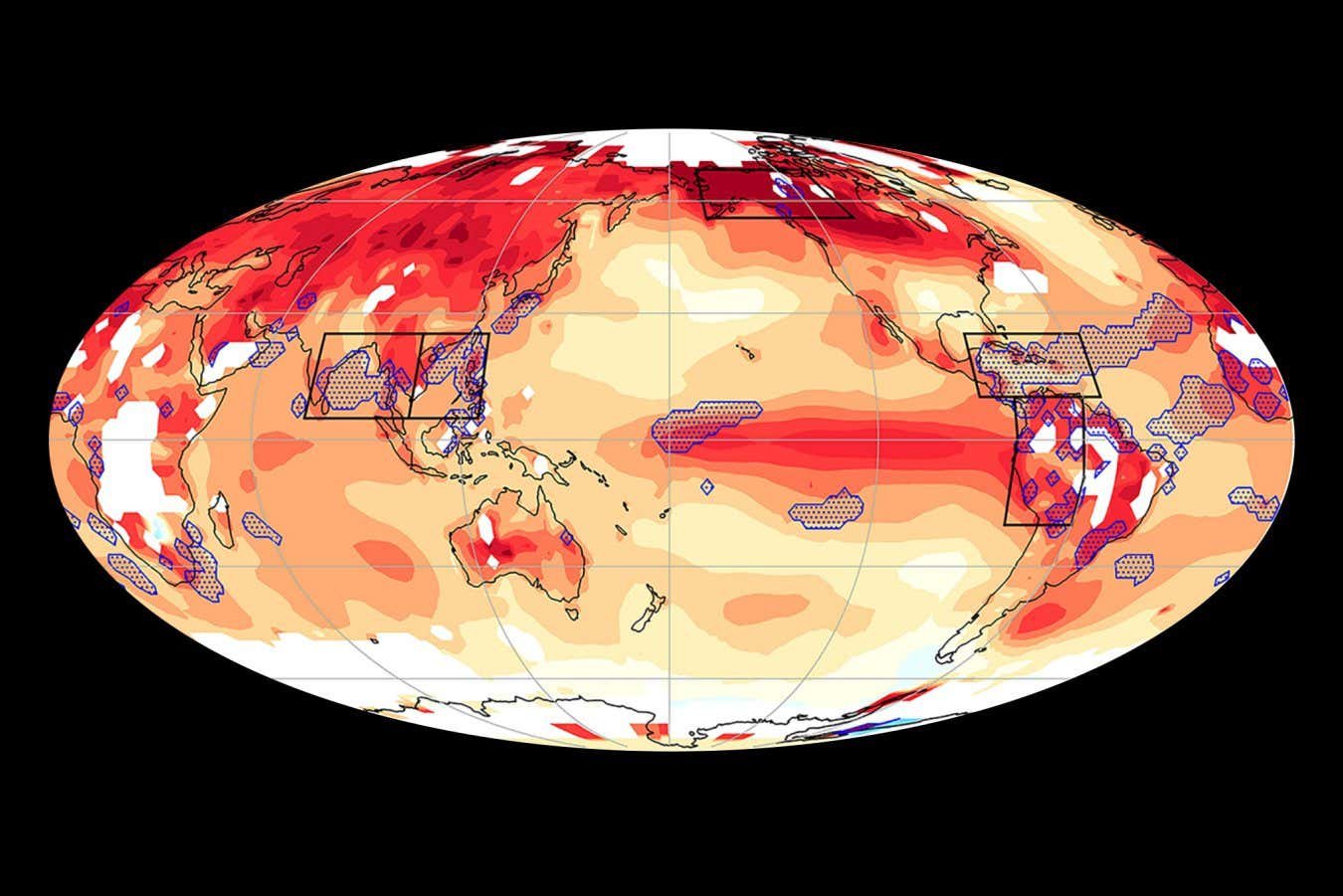
Map showing predicted surface temperature anomalies in 2024 under a strong El Niño. Blue dots show the areas where record-breaking heat is predicted
Ning Jiang et al, Scientific Reports
The Caribbean, the Bay of Bengal, the South China Sea and parts of Alaska and the Amazon will have their hottest 12-month period on record this year due to the ongoing El Niño weather pattern, according to a forecast by a climate model.
“These are the places where there will be an elevated risk of extremes, and these extremes are really damaging,” says team member Michael McPhaden at the NOAA Pacific Marine Environment Laboratory in Seattle, Washington.
“They are damaging to human health and they increase the risks of wildfire. And in the oceans, they increase the risk of marine heatwaves, which are damaging to marine ecosystems, fisheries and corals,” he says.
Global surface temperatures across much of the world are currently at an all-time high. The main reason for this is the warming caused by carbon emissions from the burning of fossil fuels. But on top of this, a strong El Niño phase that began in the middle of 2023 is pushing up temperatures even further.
During El Niño, warm water spreads across the surface of the Pacific Ocean towards South America. This vast area of warm water transfers a lot of ocean heat into the atmosphere, causing surface temperatures to rise.
In the opposite phase, known as La Niña, this process reverses: cold water spreads across the surface of the Pacific away from South America, absorbing heat from the atmosphere and reducing surface temperatures.
This means the global average surface temperature usually hits record levels during El Niño phases and then declines during La Niña.
McPhaden and his colleagues used a computer model that accounts for aerosol pollution and volcanic eruptions in addition to El Niño to try to forecast where in the world record heat will occur. Their regional forecasts are for the average surface temperature over the period from July 2023 to June 2024.
“There’s a real value to having this kind of a warning, even if it’s not precisely timed to a particular season,” says McPhaden. “It gives you some lead time for preparing on how best to protect lives, property, living marine resources and economic development.”
The team considered two scenarios: a strong El Niño and a more moderate one. It is now clear that we are seeing a strong El Niño – in fact, it is likely to be among the top five strongest El Niños since 1950, says McPhaden.
For this strong El Niño scenario, the team forecasts that the global average surface temperature between July 2023 to June 2024 will be between 1.1 and 1.2°C higher than the 1951 to 1980 average.
This is equivalent to 1.4 to 1.5°C above the 1850 to 1900 average, New Scientist calculates, which is regarded as the pre-industrial benchmark. This suggests the model is underestimating temperatures, as this level has already been exceeded. From January 2023 to January 2024, the average global surface temperature was more than 1.5°C above the 1850 to 1900 average, and during January 2024 it was 1.7°C above this level.
Temperature records have already been smashed during the ongoing El Niño, especially in the tropics, says Maximiliano Herrera, an independent climatologist who tracks extreme temperatures. “This is a super one,” he says. “The record heat is persistent and inescapable.”
Topics:

